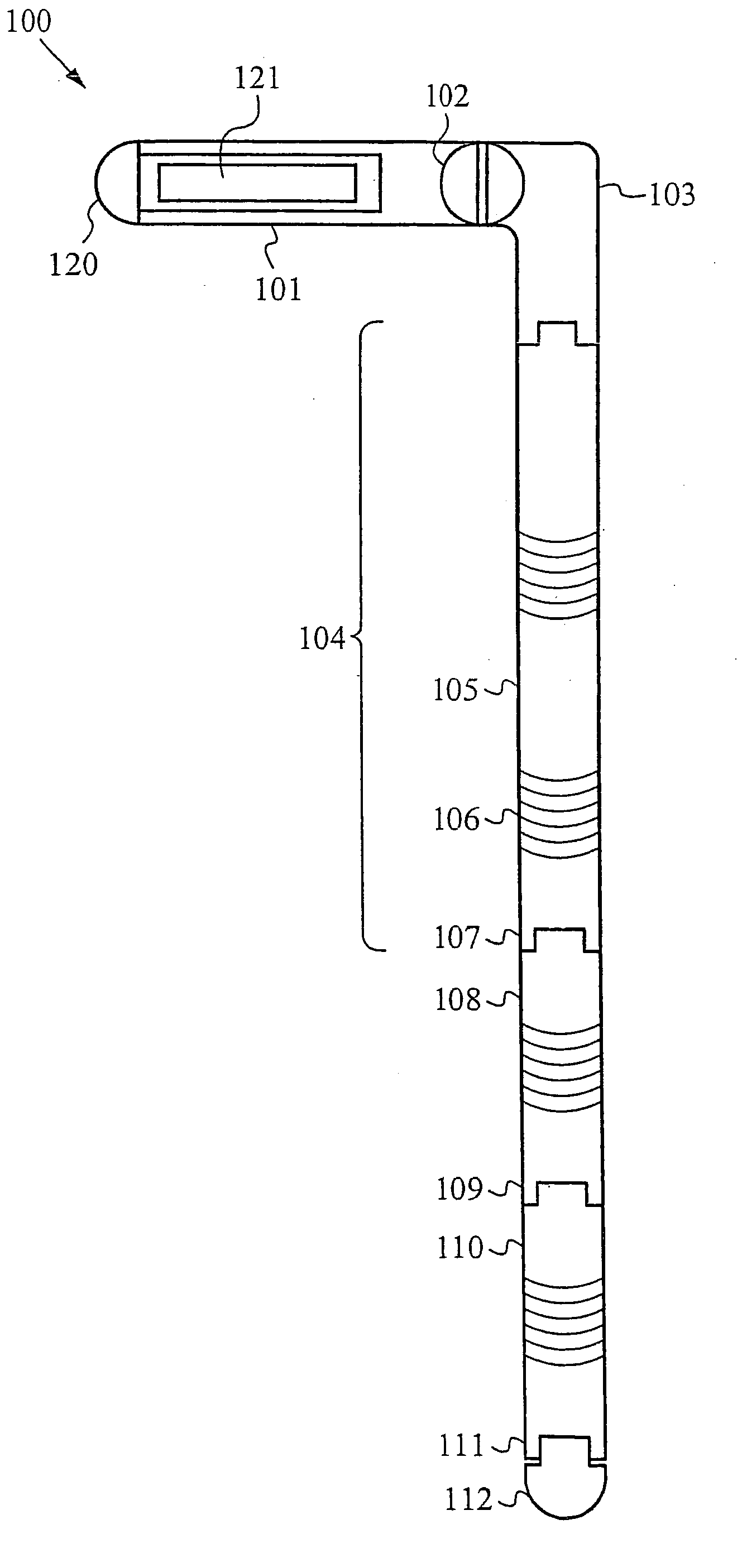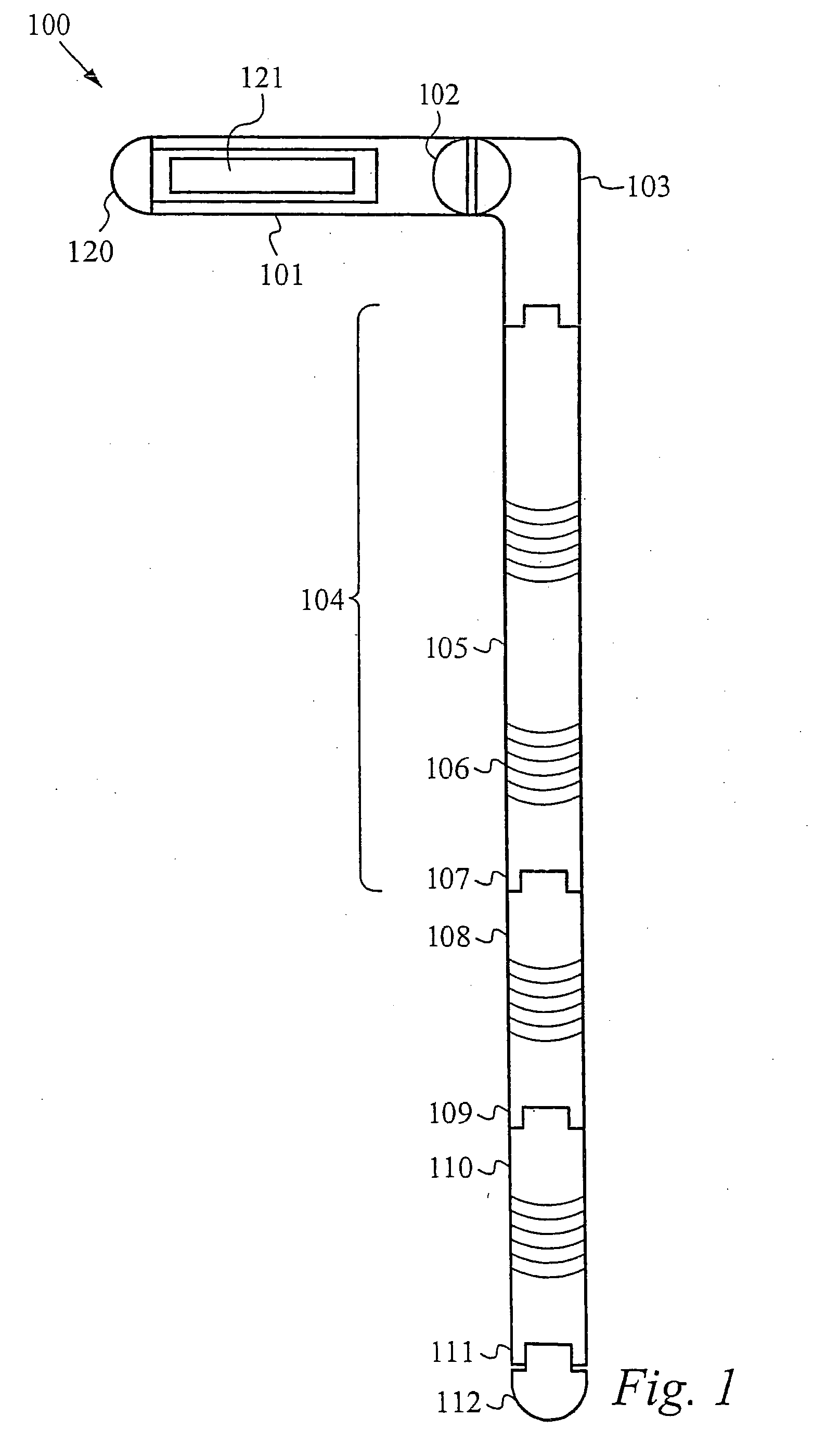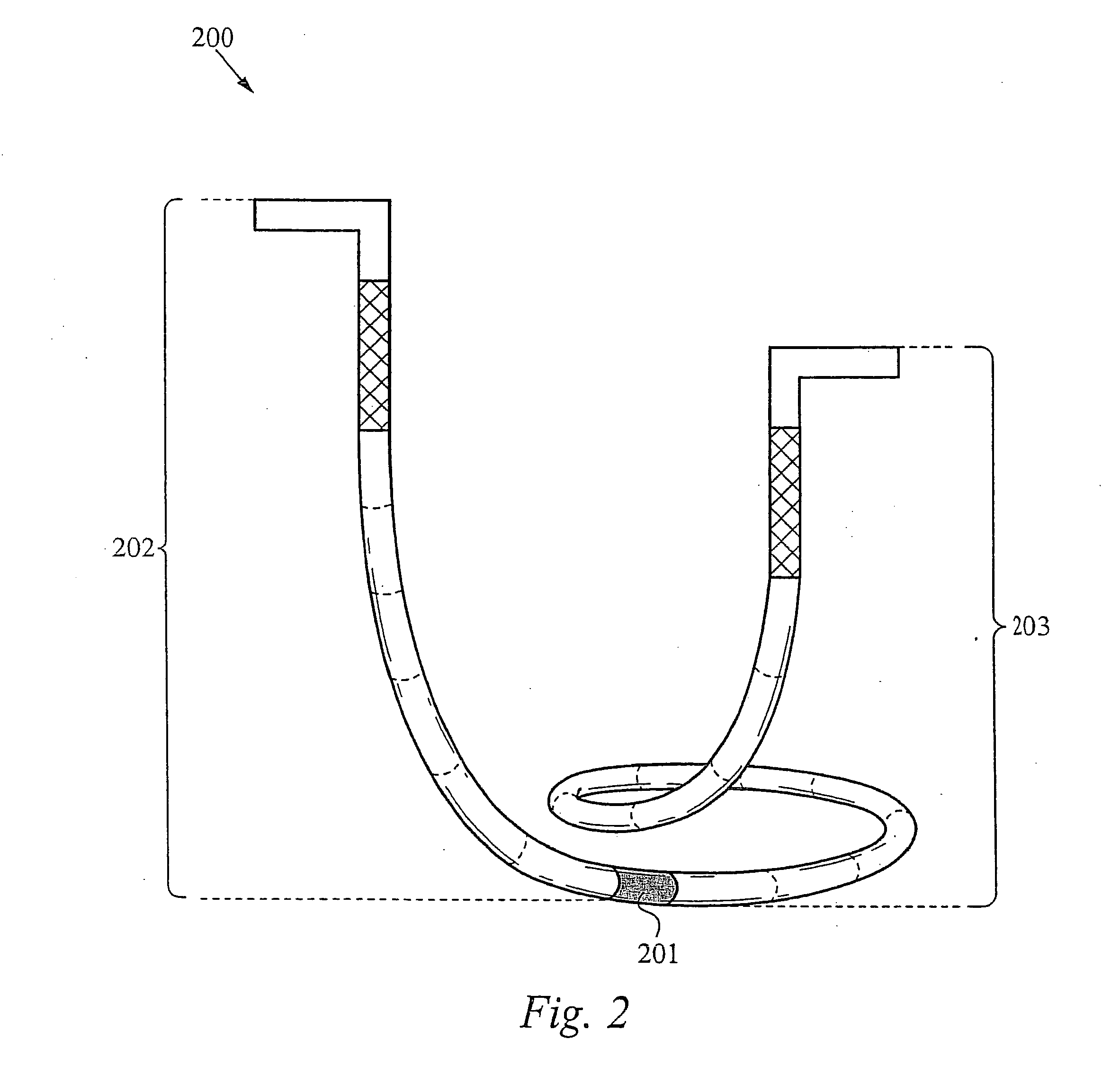Jump rope simulator
a simulator and jump rope technology, applied in the field of jump rope simulators, can solve the problems of losing the rhythm and timing of exercise workout, falling over the rope, etc., and achieve the effect of convenient storage and transportation, easy addition or removal by a user, and convenient storage and transportation
- Summary
- Abstract
- Description
- Claims
- Application Information
AI Technical Summary
Benefits of technology
Problems solved by technology
Method used
Image
Examples
Embodiment Construction
[0019]FIG. 1 illustrates a jump rope simulator 100 in accordance with the preferred embodiment of the present invention. The jump rope simulator unit 100 has a handle that is L-shaped and padded on the long side 101 with a resilient material in an ergonomic shape that fits comfortably in a user's hand during exercise workouts. The handle has a short side 103 that is attached to the long side of the handle 101 by a ball-bearing joint 102 which allows the short side of the handle 103 to rotate 360 degrees around the longitudinal axis of the long side of the handle. A sound mechanism is preferably built into the ball-bearing joint 102 such that for each rotation of the handle 103 around the long side of the handle, an audible sound is output. The rotatable handle is designed so that when the user rotates the individual unit, the far end of the unit is prevented from impacting the user's legs. The long side of the handle 101 is preferably hollow and has a removable end-cap 120. A weight...
PUM
 Login to View More
Login to View More Abstract
Description
Claims
Application Information
 Login to View More
Login to View More - R&D
- Intellectual Property
- Life Sciences
- Materials
- Tech Scout
- Unparalleled Data Quality
- Higher Quality Content
- 60% Fewer Hallucinations
Browse by: Latest US Patents, China's latest patents, Technical Efficacy Thesaurus, Application Domain, Technology Topic, Popular Technical Reports.
© 2025 PatSnap. All rights reserved.Legal|Privacy policy|Modern Slavery Act Transparency Statement|Sitemap|About US| Contact US: help@patsnap.com



